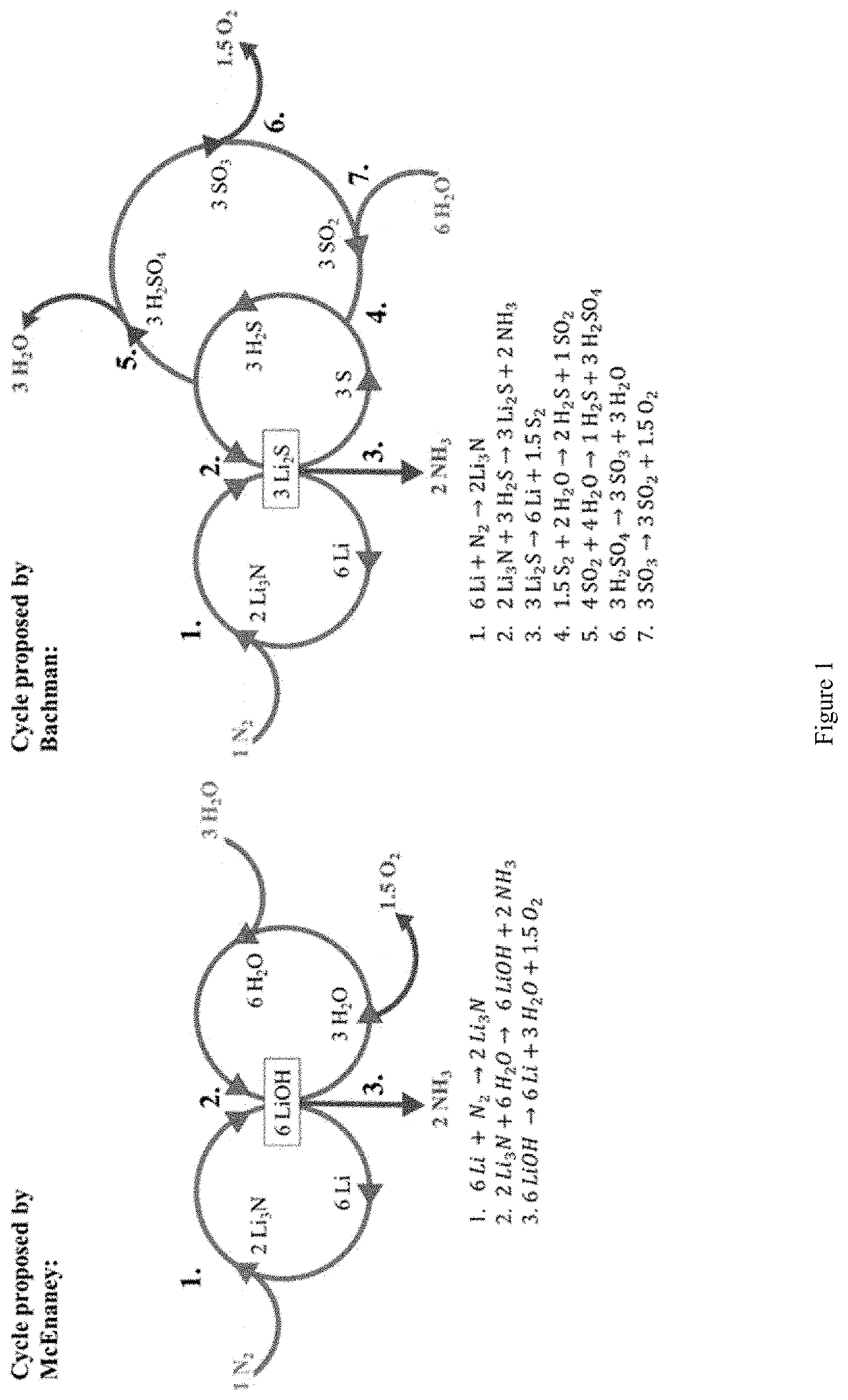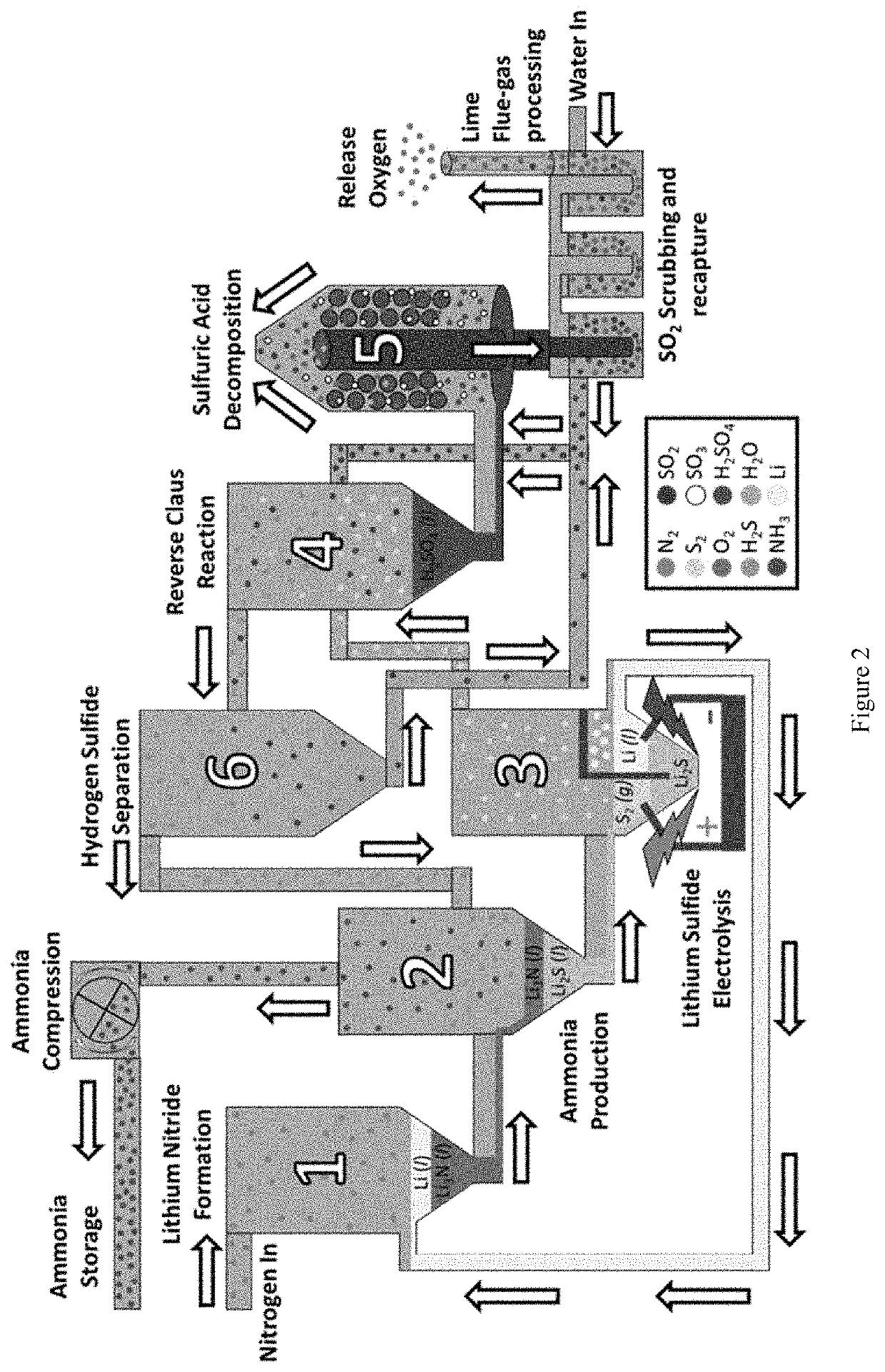Synthesis of Ammonia Using Cycle-Generated Hydrogen Sulfide
a technology of ammonia and hydrogen sulfide, which is applied in the direction of sulfur compounds, chemical/physical/physicochemical processes, organic chemistry, etc., to achieve the effect of effectively removing excess carbon dioxide, oxygen, and/or other unwanted byproducts
- Summary
- Abstract
- Description
- Claims
- Application Information
AI Technical Summary
Benefits of technology
Problems solved by technology
Method used
Image
Examples
example 1
ydrocarbon-Sulfur-Ammonia (OHSA) Cycle
Background
[0056]The adoption of the Haber-Bosch process and the resulting surplus of ammonia (NH3)-based fertilizer in 1913 allowed for the massive population explosion over the last century. [1] This process operates through the direct combination of elemental nitrogen sequestered from ambient air with hydrogen obtained from steam-reforming methane to produce ammonia. While the Haber-Bosch process has been an undoubted success, our reliance upon it has not come without cost; due to the need for high temperatures and pressures (˜426° C. and ˜200 atm), this process uses roughly 1% of all energy generated on Earth. [2] Further, the steam reforming of methane to generate hydrogen for this process is responsible for ˜0.93% of all carbon dioxide emissions on Earth. [3]
[0057]With anthropomorphic climate change becoming more apparent, and with a limited global supply of methane, alternative methods of producing ammonia, utilizing renewable energies and...
example 2
ectrification Strategy for Ammonia Production Using Lithium and Hydrogen Sulfide by the Reverse Claus Process
SUMMARY
[0133]In this example, we disclose a new cyclic process of for making ammonia that represents a significant improvement of the previously disclosed Bachman cycle. It uses less energy than the Haber-Bosch process, ideally can operate on all-renewable power, and is able to operate continuously. In this example, we both outline the process and provide a roadmap for future research that can be used to tune the process for its most efficient and effective implementation.
[0134]This new cycle leverages multiple known reactions and combines them in a new way to form a unified cycle capable of turning water and nitrogen gas into ammonia continuously. This cycle uses both elemental sulfur and lithium to decompose water and fixate nitrogen respectively, while only generating oxygen and NH3, with no environmental pollutants. This cycle can be run entirely on renewable power and co...
PUM
| Property | Measurement | Unit |
|---|---|---|
| atmospheric pressure | aaaaa | aaaaa |
| atmospheric pressure | aaaaa | aaaaa |
| pressure | aaaaa | aaaaa |
Abstract
Description
Claims
Application Information
 Login to View More
Login to View More - R&D
- Intellectual Property
- Life Sciences
- Materials
- Tech Scout
- Unparalleled Data Quality
- Higher Quality Content
- 60% Fewer Hallucinations
Browse by: Latest US Patents, China's latest patents, Technical Efficacy Thesaurus, Application Domain, Technology Topic, Popular Technical Reports.
© 2025 PatSnap. All rights reserved.Legal|Privacy policy|Modern Slavery Act Transparency Statement|Sitemap|About US| Contact US: help@patsnap.com


